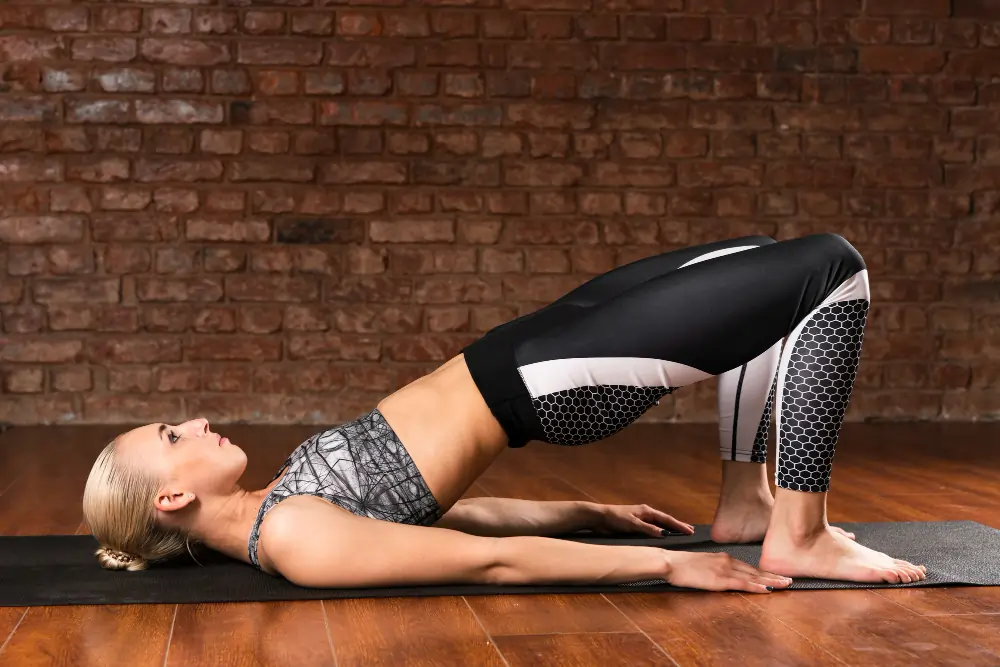
Our gut health plays a crucial role in our overall well-being. A healthy gut can enhance digestion, boost immunity, and even affect our mood. If you’re looking for a natural way to improve your gut health, incorporating yoga into your daily routine can be immensely beneficial. In this article, we’ll explore five must-try yoga poses that can help improve your gut health.
1. Adho Mukha Svanasana

The Adho Mukha Svanasana is a foundational yoga pose that engages the entire body. It is excellent for stretching the back, hamstrings, and calves. This pose also promotes blood circulation and stimulates the digestive system, making it perfect for improving gut health.
To perform this pose, follow these steps:
- Start on your hands and knees, with your hands shoulder-width apart and your knees hip-width apart.
- Slowly lift your knees off the ground, straightening your legs while keeping your arms extended.
- Press your palms firmly into the ground and lengthen your neck, bringing your ears between your upper arms.
- Relax your shoulders and engage your core muscles.
- Hold the pose for 5-10 breaths, gradually increasing the duration as you become more comfortable.
Benefits of Adho Mukha Svanasana for Gut Health:
- Stretches and strengthens the entire body
- Improves digestion and relieves constipation
- Reduces stress and anxiety
2. Paschimottanasana

The Paschimottanasana is a calming pose that gently stretches the entire back of the body, from the head to the heels. This pose stimulates the digestive organs, promoting healthy digestion and relieving gastrointestinal discomfort.
To perform this pose, follow these steps:
- Sit on the ground with your legs extended in front of you.
- Inhale and raise your arms above your head.
- Exhale as you fold forward from the hips, reaching for your feet or ankles.
- Relax your neck and gently lengthen your spine.
- Stay in the pose for 1-3 minutes, breathing deeply and surrendering to the stretch.
Benefits of Paschimottanasana for Gut Helth:
- Calms the mind and reduces stress
- Relieves digestive issues like bloating and gas
- Stimulates the liver and kidneys
3. Marjaryasana-Bitilasana

The Marjaryasana-Bitilasana is a gentle flowing movement between two poses, providing a wonderful stretch to the spine. This pose helps to release tension in the back and abdomen, facilitating healthy digestion and promoting gut health.
To perform this pose, follow these steps:
- Start on your hands and knees, with your wrists directly under your shoulders and your knees under your hips.
- Inhale as you lift your chest and tailbone towards the ceiling, allowing your belly to sink towards the ground (Cow Pose).
- Exhale as you draw your navel towards your spine, arching your back towards the ceiling and tucking your chin towards your chest (Cat Pose).
- Repeat the movement for 5-10 rounds, syncing your breath with the motion.
Benefits of Marjaryasana-Bitilasana for Gut Health:
- Increases spinal flexibility and strengthens the core
- Massages the digestive organs, aiding digestion
- Relieves back pain
4. Setu Bandhasana

The Setu Bandhasana is a rejuvenating backbend that helps open up the chest and stretch the spine. It stimulates the abdominal organs, promoting better digestion and alleviating digestive discomfort.
To perform this pose, follow these steps:
- Lie on your back with your knees bent and your feet hip-width apart, close to your buttocks.
- Place your arms by your sides, palms facing down.
- Inhale and lift your hips off the ground, pressing into your feet and shoulders.
- Keep your thighs parallel and interlace your fingers beneath your body, pressing your arms into the ground.
- Hold the pose for 30 seconds to 1 minute, breathing deeply.
Benefits of Setu Bandhasana for Gut Health:
- Strengthens the back, buttocks, and legs
- Massages the digestive organs and enhances digestion
- Relieves stress and fatigue
5. Ardha Matsyendrasana

The Ardha Matsyendrasana Pose is a seated twist that detoxifies the body and stimulates the digestive system. It improves digestion, relieves constipation, and enhances gut health.
To perform this pose, follow these steps:
- Sit on the ground with your legs extended in front of you.
- Bend your right knee and place your right foot on the outside of your left thigh.
- Inhale and lengthen your spine, and then exhale as you twist towards the right, placing your left elbow outside your right knee.
- Use each inhales to lengthen your spine and each exhale to deepen the twist.
- Hold the pose for 30 seconds to 1 minute, then switch sides.
Benefits of Ardha Matsyendrasana Pose for Gut Health:
- Stimulates digestion and aids in detoxification
- Increases spinal flexibility and massages the abdominal organs
- Relieves lower back pain
Incorporating these five yoga poses into your daily routine can have a significant impact on your gut health. Remember to practice them mindfully and listen to your body’s limitations. Alongside yoga practice, maintaining a balanced diet and healthy lifestyle will further enhance the benefits.
Conclusion
Improving your gut health is essential for overall well-being, and yoga offers a natural and effective way to achieve this. The five yoga poses outlined—Downward Facing Dog, Seated Forward Bend, Cat-Cow Pose, Bridge Pose, and Twist Pose—can help stimulate digestion, relieve gastrointestinal discomfort, and enhance gut health. By incorporating these poses into your routine, you’ll be well on your way to a healthier gut and a stronger body.
FAQs
1. Can I practice these yoga poses if I’m a beginner?
Absolutely! These poses are suitable for all levels, including beginners. Start slowly and listen to your body. If any pose feels uncomfortable, modify it or seek guidance from a qualified yoga instructor.
2. How long should I hold each pose?
Begin withholding each pose for 30 seconds to 1 minute. As you become more comfortable, gradually increase the duration to reap greater benefits.
3. Can yoga poses alone improve gut health?
While yoga poses can contribute to improving gut health, it’s important to maintain a balanced diet, manage stress levels, and lead a healthy lifestyle. These factors, in combination with yoga, will yield the best results.
4. How often should I practice these poses?
Ideally, aim for a daily practice. However, if that’s not feasible, try to incorporate these poses into your routine at least three to four times a week to experience noticeable benefits.
5. Can I practice yoga poses after meals?
It’s generally recommended to practice yoga on an empty stomach. However, a gentle practice can be done 1-2 hours after a light meal. Avoid rigorous poses immediately after eating to prevent discomfort.


